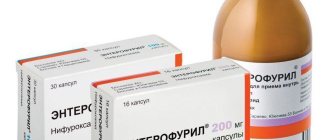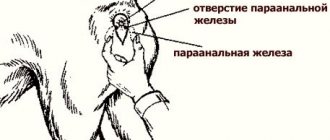A heart attack in a dog is a dangerous symptom that can lead to the death of your pet. At the first signs of this condition, it is important to call a veterinarian or take the animal to the clinic as soon as possible. However, even veterinary care does not always give a positive result.
The circulatory system is a single and integral system, the main motor of which is the heart. It is inextricably linked with the respiratory system and the entire body as a whole. Therefore, a disruption in the work of any link can lead to serious consequences.
What is a heart attack, its types
A heart attack is an acute condition in which a dog exhibits characteristic signs associated with abnormal heart and respiratory rhythms. This pathology often develops in older animals. However, some pets have congenital anatomical abnormalities that also lead to a heart attack.
The condition can develop both due to dysfunction of the heart itself and a number of other factors. Heart attacks in dogs are much less common than in humans. It occurs as a result of an ischemic process, and necrosis gradually develops in the area of cardiac tissue.
As a result of the development of pathology in the body, a number of disorders occur at the cellular level. The electrolyte balance of fluids and tissue nutrition may change, and gas exchange in organs may deteriorate.
In a healthy body, there are three functional components of the cardiovascular system that ensure optimal heart function:
- Appropriate volume of circulating blood.
- The normal pumping function of the heart, which provides the body with the necessary volume of blood flow both at rest and under stress.
- An arterial and venous vascular network that can expand and contract (allowing blood flow to organs and cavities to be regulated depending on constantly changing needs).
Any violation of at least one factor leads to metabolic disorders and, as a consequence, failure of the heart muscle.
Stages of a heart attack
- Pre-infarction or prodromal stage (from a couple of hours to a month).
- The most acute stage (from the moment of ischemia to the first necrotic changes).
- Acute stage (necrosis formation, 2-10 days).
- Subacute stage (scar formation, granulation tissue replaces necrotic tissue).
- Post-infarction stage (scar thickening, heart muscle fully adapts to new changes).
With timely diagnosis, proper treatment and good care, a dog’s life can be significantly extended after a heart attack.
Causes of seizures in dogs
A number of reasons that affect the functioning of the vascular system can lead to the development of a heart attack in a dog:
- Impaired function of the left or right ventricle of the heart.
- Circulatory disorders (thrombosis, thromboembolism, etc.).
- Arrhythmia.
- Cardiomyopathy.
- Injuries.
- Hormonal disorders.
- Overweight.
- Shock state (anaphylactic, cardiogenic).
- Acute heart failure.
- Postoperative period.
- Stress (as a trigger factor).
- Hereditary factor (sudden death from a heart attack in the dog’s pedigree from one of the ancestors).
What diseases can be confused with?
Myocardial infarction is difficult to diagnose and easily confused with other diseases. Let's look at some of them:
- Pulmonary embolism is a blockage of the lumen of the trunk or branches of the pulmonary artery by a thrombus/embolus.
- A dissecting aortic aneurysm is a rupture of the aorta (the largest vessel), blood enters the layers of the aorta and dissects them.
- Acute pericarditis is inflammation of the serous membrane of the heart.
- Spontaneous pneumothorax is the penetration of air into the pleural cavity.
- Unstable angina is a period of development of coronary heart disease.
- Non-cardiac causes.
Symptoms of a Heart Attack in Dogs
In dogs, the attack manifests itself differently, depending on the severity of the condition. The main symptoms may be:
- pulmonary edema (hard breathing, wheezing);
- state of shock (lack of response to external stimuli);
- difficulty breathing or lack of breathing movements;
- absence or irregular pulse;
- dyspnea;
- forced unnatural body position;
- disorientation;
- cough;
- cyanosis (blue color) or pallor of visible mucous membranes.
Methods for its diagnosis
You cannot diagnose a heart attack in your pet on your own. With this condition, it is extremely important to determine the cause and try to eliminate it as soon as possible. When examining an animal, the following methods are used:
- General inspection.
- Study of peripheral pulse (rhythm, filling).
- Auscultation of the heart at various points (determine heart rate, atrial fibrillation, rhythmicity of the impulse).
- General clinical and biochemical blood tests (check the level of electrolytes, hemoglobin, albumin, etc.).
- X-ray (assess the condition of the chest, the size and contours of the heart, changes in the lung parenchyma, vessels of the chest cavity, etc.).
- Electrocardiography (for monitoring the condition) - shows rhythm and conduction disturbances, the effect of the drugs used on the activity of the heart.
- Echocardiography (ultrasound examination helps to see the functioning of the heart structures: atria, ventricles and valve apparatus).
Providing first aid to a pet
If your dog shows signs of a heart attack, it is important to provide first aid as soon as possible. The use of medications without the advice of a veterinarian is undesirable. A number of medications can have the opposite effect and harm your pet.
At home, before the doctor arrives, the following manipulations can help a dog with a heart attack:
- The pet is placed on its right side.
- You should talk to the animal in a calm tone, without sudden movements or sounds.
- Ensuring airway patency. It is important to thoroughly wipe off drool and nasal discharge with a gauze pad; the tongue is pulled out and laid on its side.
- Indirect cardiac massage is performed only if you have the appropriate experience. Place your palm in the area of the elbow joint and apply rhythmic pressure (lightly), simulating a heartbeat.
- And artificial ventilation is carried out in the absence of natural respiratory movements in the animal. Hold the pet's muzzle with your hand and blow a portion of air directly into the nose (with direct contact).
Expert opinion
Kuzmenko Olga Olegovna
Information about the expert
Ask a Question
These procedures are carried out only if you have experience and in a hopeless situation. The main measure is a complete examination of the animal by a specialist. After the attack has stopped, the pet should receive drug therapy for further recovery.
Treatment of heart attacks
In cardiac disorders, there are two factors that determine the survival rate of an animal:
- early recognition of the problem;
- Immediate initiation of basic resuscitation measures.
It is impossible to fully help your pet at home. Depending on the condition, the dog is provided with assistance immediately or after a comprehensive diagnosis.
During resuscitation of a pet, the owner is always asked to wait in another room. This is done for safety reasons and to ensure that all necessary measures are taken as quickly as possible. What procedures are carried out in a veterinary clinic for an animal in serious condition:
- If necessary, sedation (only in specific cases at the discretion of the doctor. This is how a stressful state is controlled, as well as tachycardia, rapid breathing).
- Installation of a peripheral venous catheter for infusions and rapid action of the medications used.
- Intubation and artificial ventilation.
- If the animal has maintained (restored) spontaneous breathing, it is placed in an oxygen chamber.
During the entire recovery period, the pet may remain in a hospital setting. This will ensure proper monitoring of the condition and correction of treatment if necessary.
In well-equipped clinics, if necessary, direct cardiac massage is performed, as well as other surgical procedures that can alleviate the pet’s condition. The doctor first assesses all risks and warns owners about them.
Most medications used in intensive care are issued strictly according to prescription. Some of them are not available to ordinary buyers. Examples of drugs used:
- isadrin;
- xicaine;
- calcium chloride;
- phenobarbital;
- naloxone;
- furosemide;
- atropine.
The use of medications without a doctor's instructions is strictly contraindicated. First of all, it is important to determine the nature of the disorder and only then the veterinarian selects a specific drug, its dosage, frequency and course of treatment.
Solutions used during infusions to treat shock and restore electrolyte balance are colloidal or crystalloid. Each has its own advantages and disadvantages, which are taken into account when prescribing.
Unfortunately, in a critical condition, all resuscitation measures taken do not always give the desired result. If treatment is successful, your pet must be closely monitored. Every six months, a comprehensive examination is carried out, including echocardiography and ECG. For a sick animal, physical activity is reduced, the diet is adjusted, and quiet conditions are provided.
Laryngeal paralysis
This condition is common in older dogs of large breeds (such as Labradors, golden retrievers). The essence of the disease is that the lumen of the larynx, which is located behind the pharynx and in front of the trachea, loses its ability to expand during inhalation. The larynx stops opening and the flow of air cannot penetrate the windpipe.
An early sign of the disease is a change in the timbre of barking; in some cases, the dog completely loses the ability to bark. Breathing becomes difficult and very noisy.
Laryngeal paralysis is often found in animals that experience difficulty breathing after vigorous or moderate exercise. Sometimes paralysis manifests itself more clearly when the weather changes (warming), which makes it possible to establish a diagnosis. Severe respiratory distress in overweight dogs in hot, humid weather is also typical of this disease.
It is important to exclude symptoms of rabies when such complaints occur!!! This disease is deadly for people and animals.
It is important to consider: • was the animal vaccinated against rabies no more than 12 months ago? • Has your dog been bitten by other animals for at least 2 months? • Is the animal kept in areas where rabies has occurred?
At the slightest suspicion of rabies, you must contact your local state veterinary clinic! First aid for difficulty breathing due to paralysis: • wet the dog's chest and stomach with cool or cold water; • minimize exposure to stress factors; • do not try to insert your hands or any instruments into the dog's mouth, unless you see a foreign object in the dog's throat when he breathes with an open mouth; • Take the dog to the clinic immediately.
Prevention measures
- Detection of congenital heart pathologies at an early age.
- Complete, comprehensive nutrition for your pet.
- Having optimal daily physical activity.
- Timely deworming (once every 3-4 months).
- Animals over 6-7 years of age are shown to a veterinarian once a year. This will help identify possible deviations in the early stages of their occurrence.
A heart attack in a dog is not a common occurrence, but requires special attention and prompt assistance. What to give to an animal in this condition is determined only by a doctor after assessing the general situation. The first thing you need to do at home before the veterinarian arrives is to try to restore respiratory and cardiac activity. However, this must be done extremely carefully.
Nutrition and care after a heart attack
As already written above, a dog after a heart attack needs dietary nutrition:
- eliminating large amounts of fat from the diet;
- complete exclusion of sweets;
- adding vitamins and minerals to the diet;
- adding fermented milk products to the diet.
Care:
- reduction of physical activity, especially for sporting or hunting dogs;
- visiting a veterinarian to monitor the animal;
- careful mating of the animal or its exclusion on the recommendation of a doctor;
- sometimes count the number of heartbeats.
Self-medication or failure to see a doctor in a timely manner can result in death.











